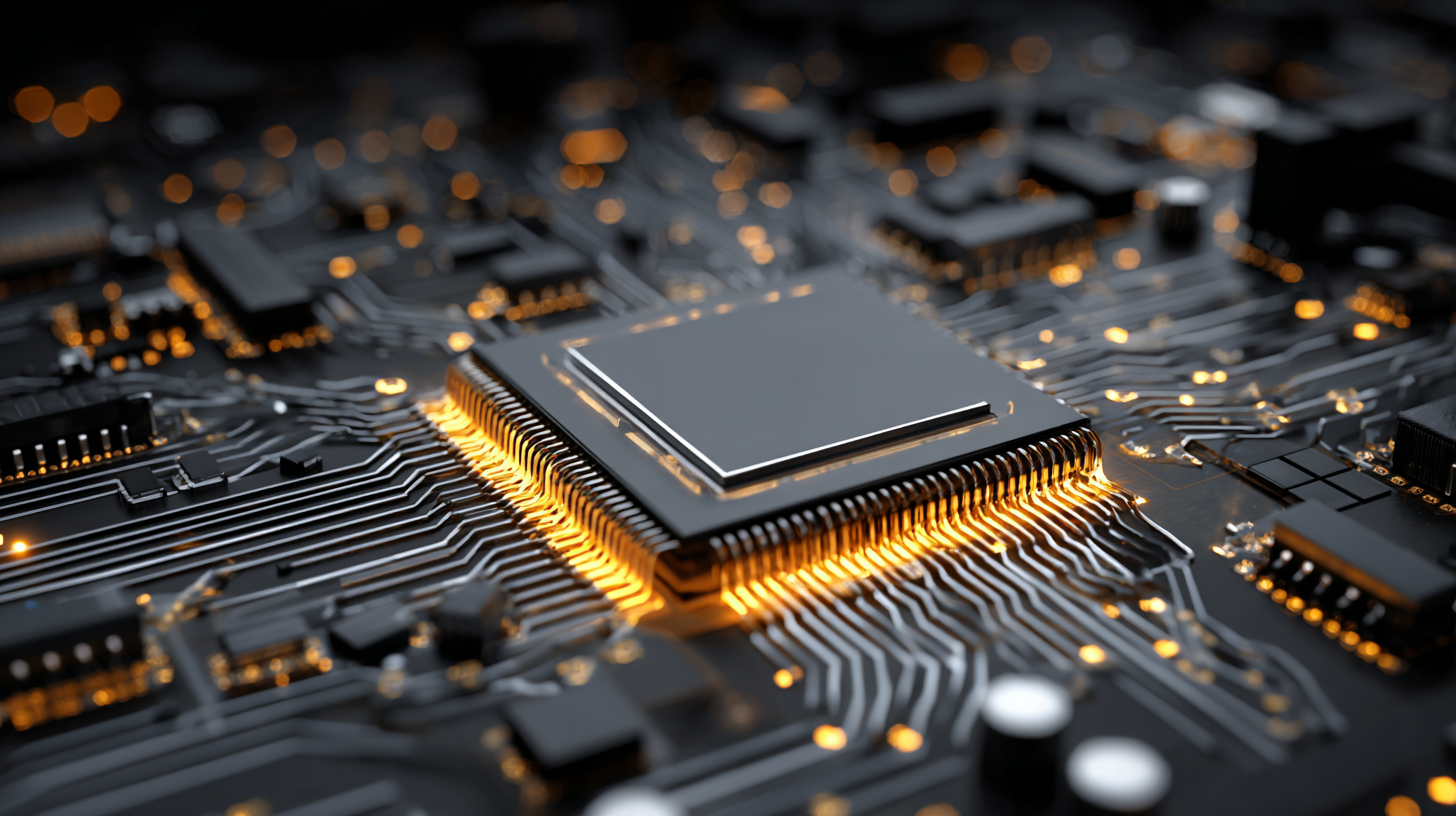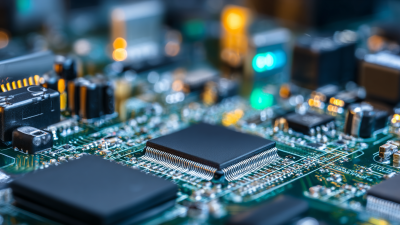As the backbone of modern electronic devices, circuit boards are undergoing significant innovations that are shaping the future of smart technology. According to a report by Research and Markets, the global printed circuit board (PCB) market is projected to reach USD 78.9 billion by 2026, growing at a CAGR of 4.3% from 2021 to 2026. This growth is fueled by advancements in miniaturization, IoT (Internet of Things) applications, and the increasing demand for smart devices across various sectors, including automotive, healthcare, and consumer electronics. With the integration of flexible and multilayer circuit board designs, manufacturers can create more efficient and compact devices that offer enhanced performance and connectivity. As we explore these innovations, it becomes clear that the evolution of circuit boards is not just a technological advancement; it signifies a pivotal change in how we interact with the world around us, making our technologies smarter and more sustainable.

The landscape of smart technology is rapidly evolving, with circuit board innovations playing a critical role in shaping this future. According to recent reports, the Printed Circuit Board (PCB) market is projected to reach USD 117.53 billion by 2032, driven by the increasing demand for consumer electronics and the adoption of new technologies like electric vehicles and 5G networks. Similarly, the Substrate Like PCB market is anticipated to grow at an impressive CAGR of 19.5%, suggesting a robust expansion towards an estimated USD 8.9 billion by 2034.
As we delve into emerging trends within circuit board innovations, the capabilities of smart devices are expanding. Manufacturers are increasingly focusing on integrating advanced features into PCBs, leading to enhanced functionality and efficiency. For businesses in the electronics sector, understanding these trends is vital.
Tip: To stay competitive, consider investing in research and development focused on circuit board advancements. Tracking industry reports and data can provide insights into where your investments can yield the best returns. Additionally, keep an eye on the growth of startups in the field, as they can be potential partners or competitors in your niche.
The rapid evolution of smart technology relies heavily on advancements in circuit board design, with advanced materials playing a pivotal role. Traditional materials, such as FR-4, are being increasingly challenged by new options that offer enhanced performance, thermal management, and miniaturization capabilities. These advanced materials, including high-frequency laminates and flexible substrates, not only support the growing demands for higher speeds and lower power consumption but also contribute to the overall reliability of electronic devices.
Moreover, the integration of composite materials and nanotechnology into circuit boards facilitates innovations in design that were previously unattainable. For instance, materials such as thermally conductive polymers can effectively dissipate heat, allowing for more compact designs without compromising on performance. The shift towards eco-friendly materials is also significant; utilizing biodegradable substrates mitigates environmental impact, aligning smart technology development with sustainability goals. As these advanced materials continue to evolve, they will undoubtedly accelerate the capabilities of smart devices, paving the way for a more connected and efficient future.

The rapid advancement of miniaturization in circuit board technology is profoundly impacting the functionality of smart devices. As the demand for smaller, more powerful gadgets increases, manufacturers are investing in innovative materials and designs that allow for reduced size without compromising performance. According to a report by the International Data Corporation, the global market for miniaturized electronics is projected to reach $1 trillion by 2026, demonstrating the significant role miniaturization plays in shaping the future of smart technology.
One of the key benefits of miniaturization is the ability to integrate more features into compact devices. For instance, advanced circuit boards now accommodate a multitude of sensors and communication modules that enhance functionality while saving space. This trend is evident in the proliferation of smart wearables, which leverage miniaturized components to deliver advanced health monitoring and connectivity features. The potential for such innovations is limitless, as technologies evolve to meet the needs of an increasingly interconnected world.
Tips: When considering the impacts of miniaturization, focus on how it can enhance user experience and convenience. Always stay updated with the latest materials, such as flexible PCBs, that can offer both durability and space-saving benefits. Additionally, consider the thermal management strategies that can be implemented to ensure device reliability as components become more densely packed.
The integration of the Internet of Things (IoT) with circuit board innovations is pivotal in enhancing connectivity across various sectors. According to a report by Mordor Intelligence, the global IoT market is expected to grow from $300 billion in 2021 to over $1 trillion by 2026. This substantial growth is largely driven by advancements in circuit board technology, which are essential for supporting the increased data throughput and connectivity requirements of smart devices. Innovations such as flexible circuit boards and high-density interconnects enable manufacturers to create smaller, more efficient devices that are fundamental to IoT applications.
Moreover, as reported by Markets and Markets, the smart circuit board market is projected to reach $27.56 billion by 2025, indicating a compound annual growth rate (CAGR) of 6.6% from 2020. These circuit board developments not only improve the performance of smart gadgets but also facilitate better energy efficiency and reliability. With the ongoing evolution of materials and manufacturing processes, the integration between IoT and circuit technologies promises a future where seamless connectivity is commonplace, making smart technology more responsive and intuitive than ever before.
The future of circuit board manufacturing holds both challenges and opportunities as the global market is projected to reach $71.57 billion in 2024, with expectations to grow to $74.12 billion by 2025 and soar to $113.49 billion by 2032. This remarkable growth is largely propelled by innovations in smart technology and the increasing demand for advanced electronics, including wearable devices and IoT applications. As manufacturers face the pressure of rapid technological advancements, they must adapt to emerging trends and ensure sustainability in their processes.

To navigate these challenges effectively, companies should prioritize investing in research and development to streamline production methods and lower costs. Efficient materials management will be vital, particularly as sourcing eco-friendly and high-performance materials becomes more critical in the industry.
Tip: Embrace automation in the manufacturing process to increase efficiency and reduce human error, which can significantly enhance product quality and consistency.
Furthermore, as manufacturers expand their capabilities, staying abreast of regulatory changes and market dynamics is essential. This adaptability will not only mitigate risks but will help businesses capitalize on new opportunities in the evolving landscape of smart technology.
Tip: Continuously monitor industry trends and customer needs to innovate and refine product offerings, ensuring they remain competitive in this rapidly growing market.






| Cookie | Duration | Description |
|---|---|---|
| cookielawinfo-checkbox-analytics | 11 months | This cookie is set by GDPR Cookie Consent plugin. The cookie is used to store the user consent for the cookies in the category "Analytics". |
| cookielawinfo-checkbox-functional | 11 months | The cookie is set by GDPR cookie consent to record the user consent for the cookies in the category "Functional". |
| cookielawinfo-checkbox-necessary | 11 months | This cookie is set by GDPR Cookie Consent plugin. The cookies is used to store the user consent for the cookies in the category "Necessary". |
| cookielawinfo-checkbox-others | 11 months | This cookie is set by GDPR Cookie Consent plugin. The cookie is used to store the user consent for the cookies in the category "Other. |
| cookielawinfo-checkbox-performance | 11 months | This cookie is set by GDPR Cookie Consent plugin. The cookie is used to store the user consent for the cookies in the category "Performance". |
| viewed_cookie_policy | 11 months | The cookie is set by the GDPR Cookie Consent plugin and is used to store whether or not user has consented to the use of cookies. It does not store any personal data. |